Real Slick, Jack: Psyche Organic Arrives in New York
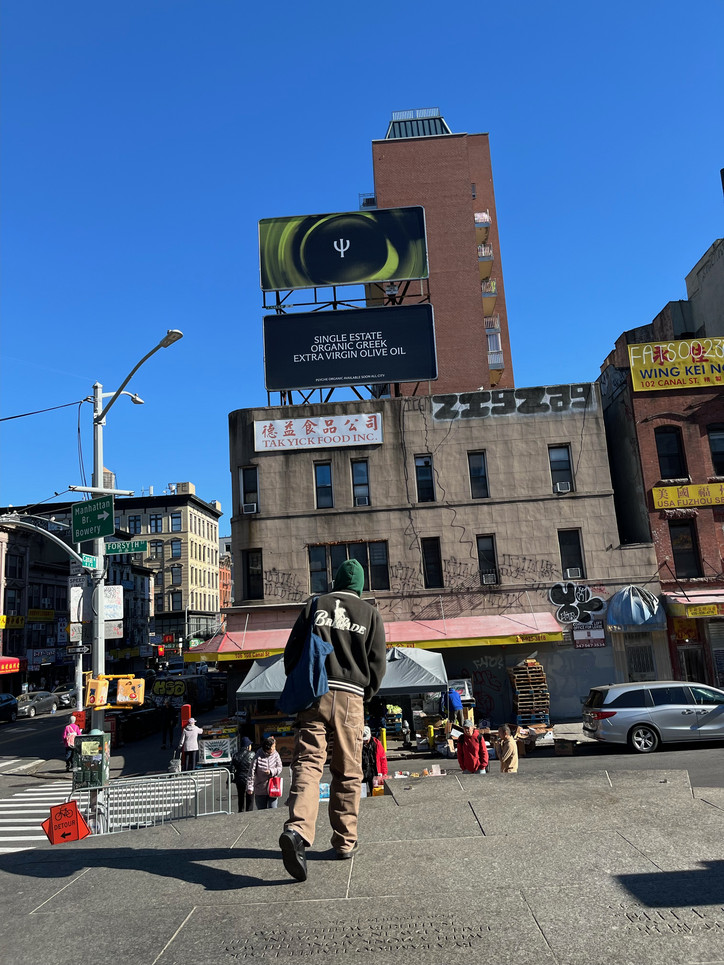
Shop Psyche Organic at Happier Grocery and Dimes. Coming soon to @citarellagourmetmarket @unionmarket @gourmetgarage @deciccos @fairwaymarket plus many more.
Stay informed on our latest news!

Shop Psyche Organic at Happier Grocery and Dimes. Coming soon to @citarellagourmetmarket @unionmarket @gourmetgarage @deciccos @fairwaymarket plus many more.
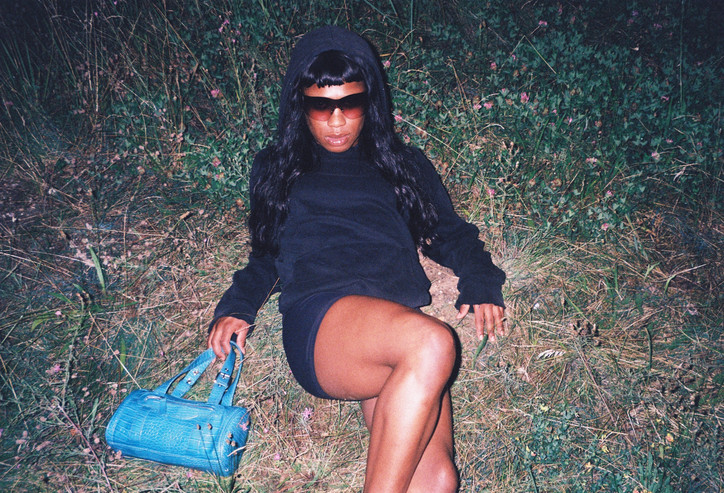
In the serotonin-depleted slump following Berlin Pride, the city slowly begins to populate with fresh faces arriving from near and very, very far. The cause for our coalescence is Whole, the world’s largest queer electronic festival with an all-time high of 8,000 attendees this year. In an era of sanitized corporate Pride parades, Whole is a reprieve: an event for actual queer people. It takes place at Ferropolis, once the center of the global brown coal industry and now a monument to Germany’s short-sighted and short-lived industrial era. I attended its sixth edition with seasoned Berlin culture photographer Spyros Rennt to document the strange harmony between joy and ruin that occurs there, asking: who will dance after the end of the world as we know it?
Whole is a festival unlike any other, thanks in part to its unique booking style. Rather than sourcing individual headliners to generate traction, it has grown organically each year by hosting a distinctive constellation of underground queer collectives from around the world. Well-known regional players like Berlin’s Mala Junta and London’s Adonis are unsurprising mainstays, but it reaches intently further with collectives like Equation (Vietnam), Mamba Negra (Brazil), The Death of Glitter (South Africa), Veselka (Ukraine), and ZVUK (Kazakhstan) rounding out this year’s program.
Over four days of constant programming, near-sleepless attendees traverse a global sampling of the queer community’s many undergrounds. After braving the 20-minute lakeside walk from the camping area to the peninsula, only somewhat regretting foregoing the Salomons for my two-inch platforms, I am greeted by the distant pulsing of Tokyo’s techno godfather DJ Nobu performing unmissably at the center of a massive concrete amphitheater. From there, I follow a meandering wooded path to the festival’s most iconic stage, a face-shaped dock suspended on the lake with Gabrielle Kwarteng and OMOLOKO peeking out through the clouds of smoke emerging from its puckered lips. After some three hours of attempted sleep, I wake up drenched in sweat and find my way to a small stage hidden behind a giant crane, where I am transported to the land of Latincore through a dizzying series of one-hour sets by Colombian powerhouses including Aleroj, CRRDR, and Rosa Pistola. I gravitate most often to the doll-dominated forest stage, where São Paulo’s peerless Slim Soledad holds court with New World Dysorder stars like Cali Rose and Khloe.
It all culminates in what my best friend Osei dubs “our Olympics”: an exhibition of the emerging and established greats of the international queer underground. Despite this remarkable range of style, identity, and geography, I am taken by Whole’s surprising cohesion. For generations, queer scenes have existed in relative isolation from one another, but there are shared themes at the heart of each local tradition: subversion, defiance, resilience, euphoria, play. Converging in place, each artist contributes to a quilted soundscape that is at once manifold and singular, celebrating both the diversity and unity of an increasingly globalized queer music culture.
It isn’t all sex, drugs, and techno — though there is plenty of each to go around. While seductive, high-BPM dance music may sustain Whole’s beating pulse, there is much more at its heart: a floral memorial to lost community members by artist João Carinho; a talk on nature’s queerness by Selma Rodriguez and Nary Götze; a session by relationship counselor Freya Rose titled “Invite Your Ex to this Workshop” that I can’t get either of my exes in attendance to come to for some reason. Blink and you’ll miss it, but those who attend year after year often say that the broader program provides the sense of nourishment and community they keep coming back for. Returning for my second year, I find that to be true. During moments of rest between dancing, these events and installations prompt me to reflect, foster connection, and wade slightly further into my queerness.
No matter where we come from, each local queer community shares in parallel struggles. Within these urban undergrounds, we are typically confined to far-flung clubs and illegal warehouses, often changing our clothes upon arrival to avoid the risk of harassment or violence on the commute. A friend of mine arriving from Malawi tells me harrowing stories of friends who have gone into hiding this month following the upheld criminalization of “same-sex conduct” there, but even in my Los Angeles home a beloved community member was recently brutally assaulted — in West Hollywood no less — simply for being trans. Shielded by its seclusion, Whole provides a home for unbridled queer expression where we are invited to step fully into our identities through our fashion, expression, and behavior.
The result is queerness taken to its logical extreme. It is a window into the kinds of worlds we can build when we are free to build for one another, without fear of repercussion. Queer people have created beauty through culture, art, and innovation as long as beauty has been created, but too often we have done so under straight direction and for straight audiences. At Whole, we are unmediated, unedited, uncontrolled — and our imaginative power feels, in a word, futuristic. Bushwick’s seasoned party girls are just as wide-eyed as the rest; however queer you are upon arrival, you are certain to leave just a little queerer. Released from the urban corners we are typically confined to, Whole is a world of our own. And damn, is it sexy.
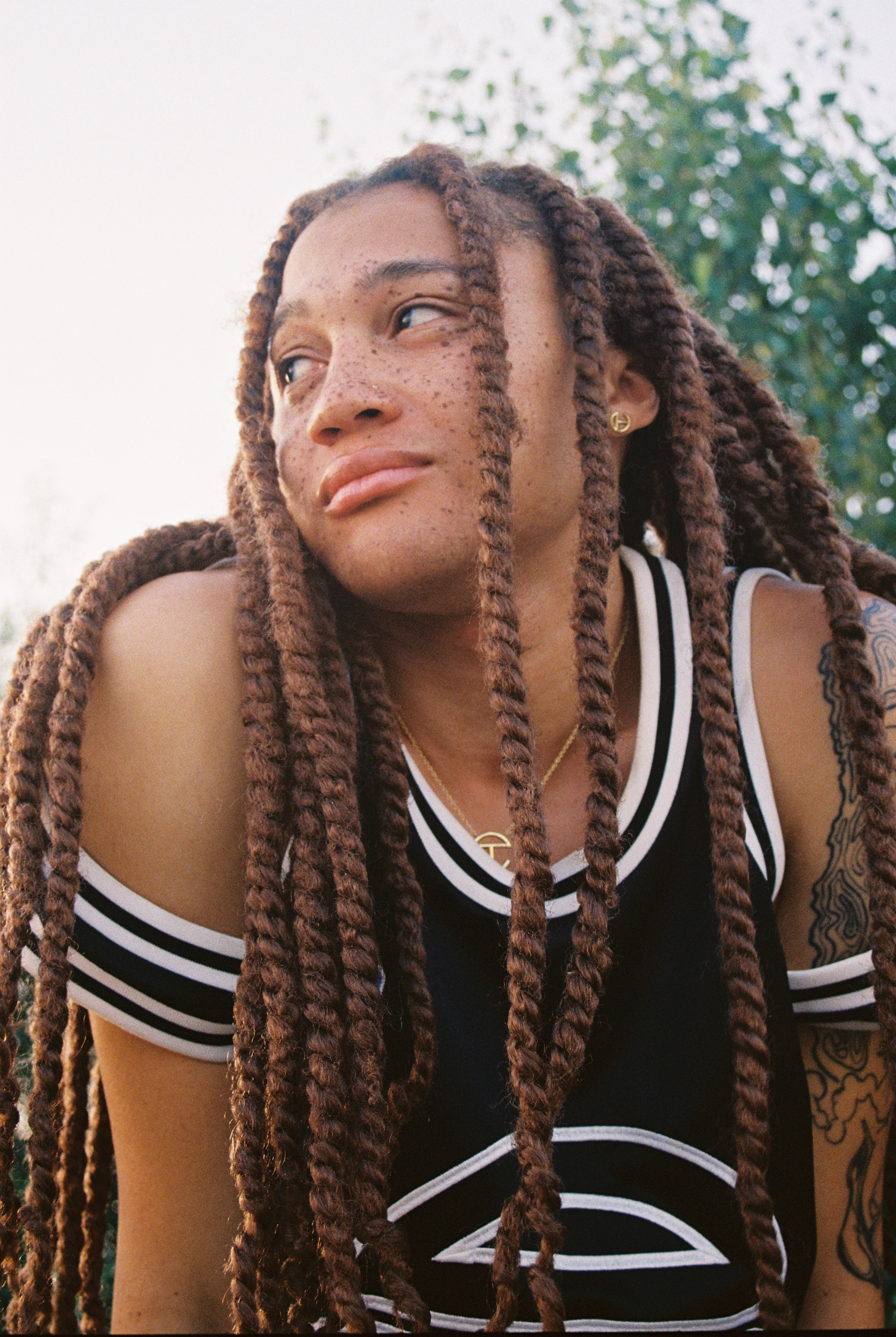
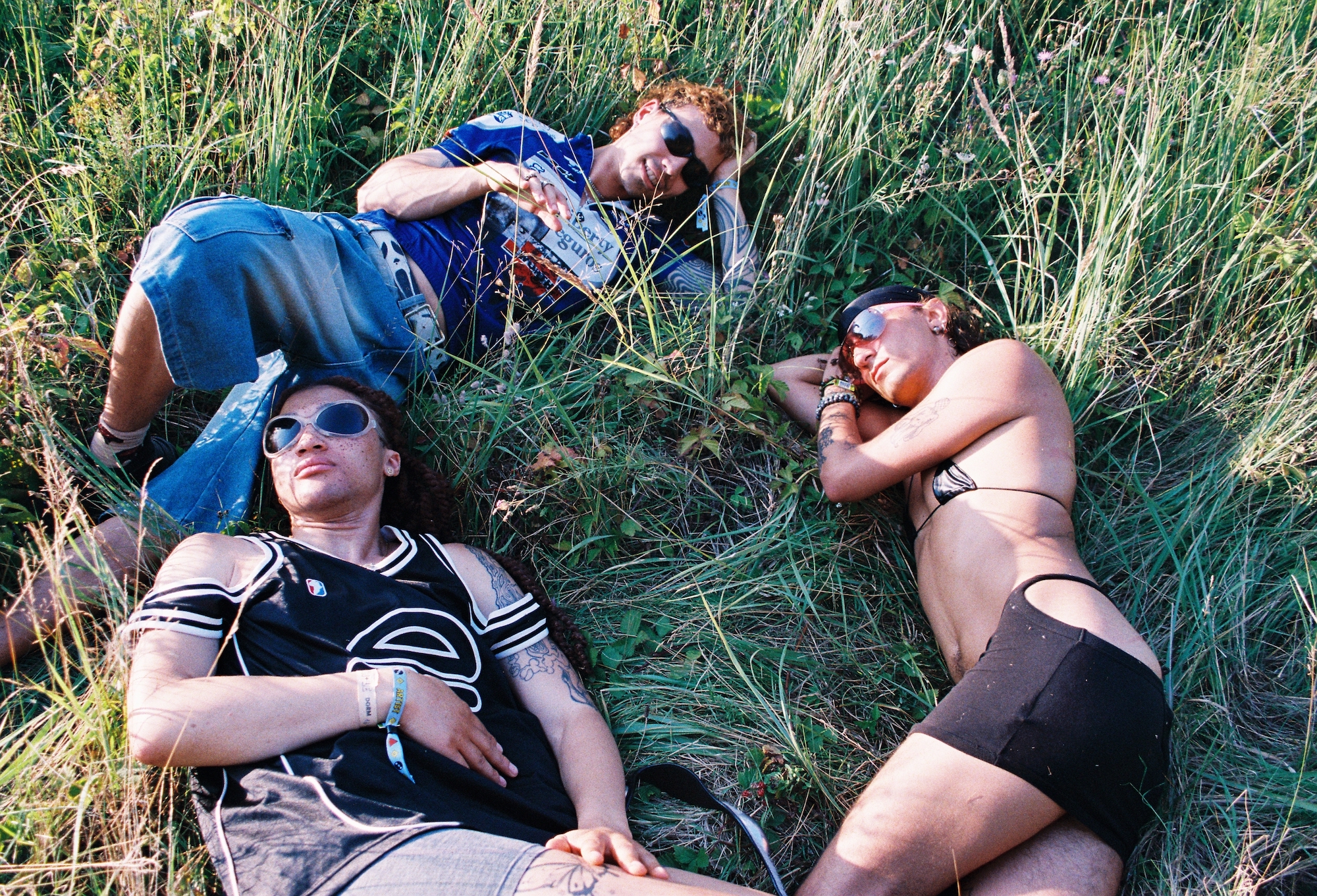


It is easy to lose sight of the landscape within which this blissful debauchery unfolds. But now and again, I find myself gazing up at the looming crane, its shadow playing sundial in heedless indication of the passage of time.
While Ferropolis is a queer mecca for one weekend each August, it is otherwise a monument to Germany’s industrial era. Throughout the second half of the 20th century, it marked the center of the global brown coal industry, making a handful of elites and corporations exorbitantly rich. That prosperity had a shelf life of 35 years, leaving little benefit to the region — now one of Germany’s poorest — while its social and ecological consequences continue to reverberate far beyond, its ravaging mark visible in even the most distant geographies we hail from. It is a strange site upon which for us to gather, as outsiders to this world system long relegated to the violent edges of the destructive paradigm it memorializes.
Even now, my sense of temporary haven dissolves as an onslaught of sporadic, heavy storms — now a hallmark of German summers in the climate crisis — interrupts the festival’s second night. At first I hide out in the artist section, one of the only parts of the peninsula not fully exposed to the elements, before deciding to brave the rain. Outside, veiled by a translucent black net, Hyperaktivist and DJ Tool perform back-to-back flawlessly for a jam-packed crowd of wet, glistening bodies dancing ecstatically in the torrent, illuminated now and again by strikes of lightning.
What kind of act is it, to dance upon ruin? Is it careless? Morbid? Obscene? Or is it liberating, hopeful in a time when hope often feels impossible? As an environmentalist and climate activist, this question weighs on me heavily when I arrive at Whole. But as the sun rises over the ambient stage, it is Brooklyn’s own Sekucci who gives me my answer.
Sekucci was given the considerable challenge of delivering a three-hour ambient set at a festival that does not adhere to any apparent standard of time. In planning, they imagined two audiences: the brave or unhinged souls still carrying from the night before (guilty as charged) and the early risers welcoming a new day. Beginning with the songs of woodlarks and hummingbirds, I listen as they slowly weave from flowing river streams and the rustle of blowing leaves to Tibetan sound bowls and instrumentals from West Africa and the Caribbean, all drums and flute. In the end, they “pressed play and gave it to God and the universe,” coaxing restful bodies once more to dance. In what they tell me is one of the most memorable sets of their career, Sekucci seamlessly unites the natural and artificial sounds that together form Whole’s sonic universe.
I begin to see two intertwined acts of reclamation taking place: one nature’s and one ours, both seizing the opportunity to build something new upon the ruins of a world that never served us. We make surprising kin, heels and acrylic nails now coated in dirt, but we share equally in the mourning and adaptability that the climate crisis has required of us. Of course it is we who dance atop steel machinery decaying with rust, who bathe in water once so contaminated it was unswimmable, who kiss in the shade of shipping containers overtaken by regaining forest. Call me naïve, but I am unwilling to accept that this moment of queer triumph, this time of profound connection and community we have fought for centuries to reach, is doomed to occur at the end of history.
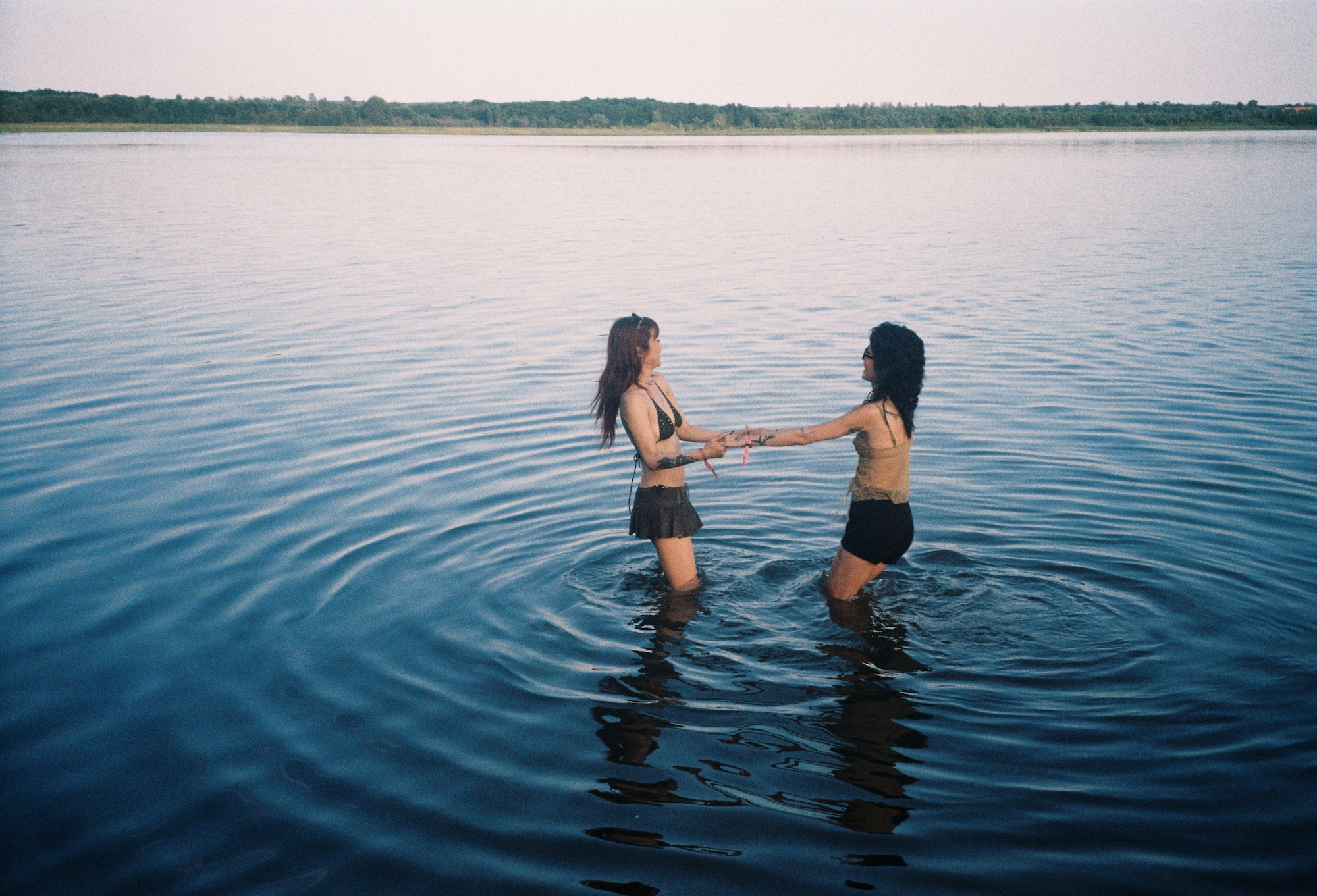
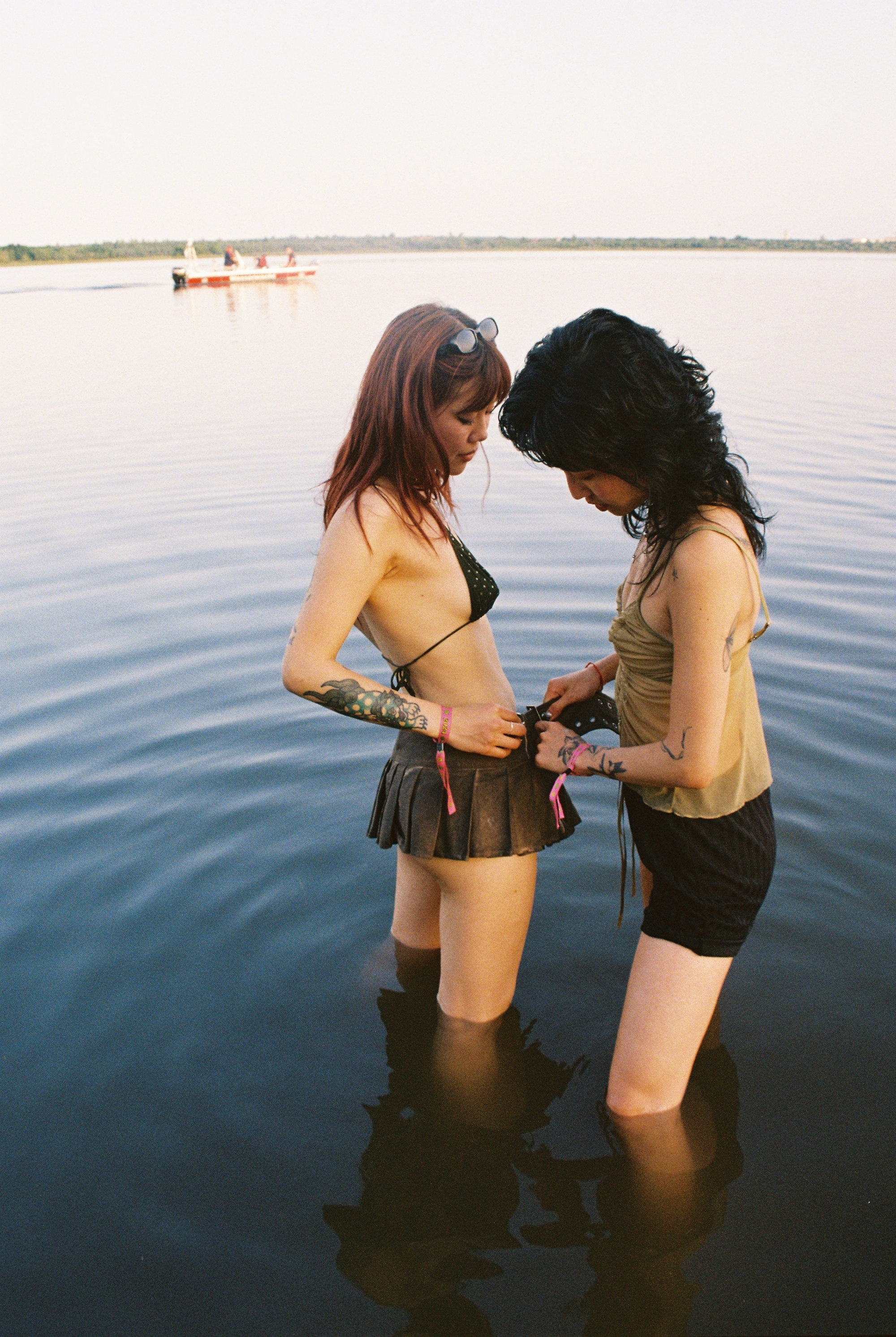
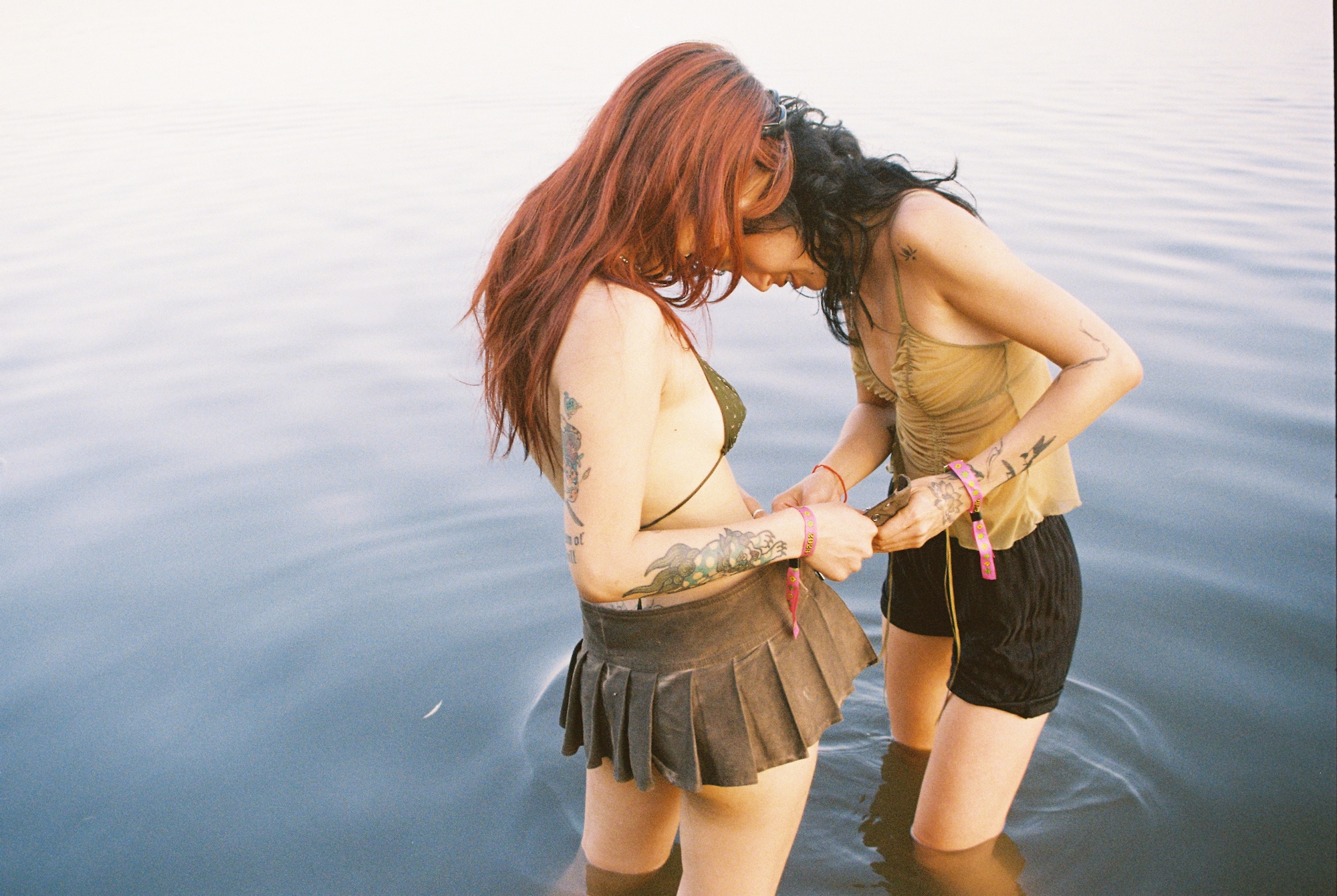
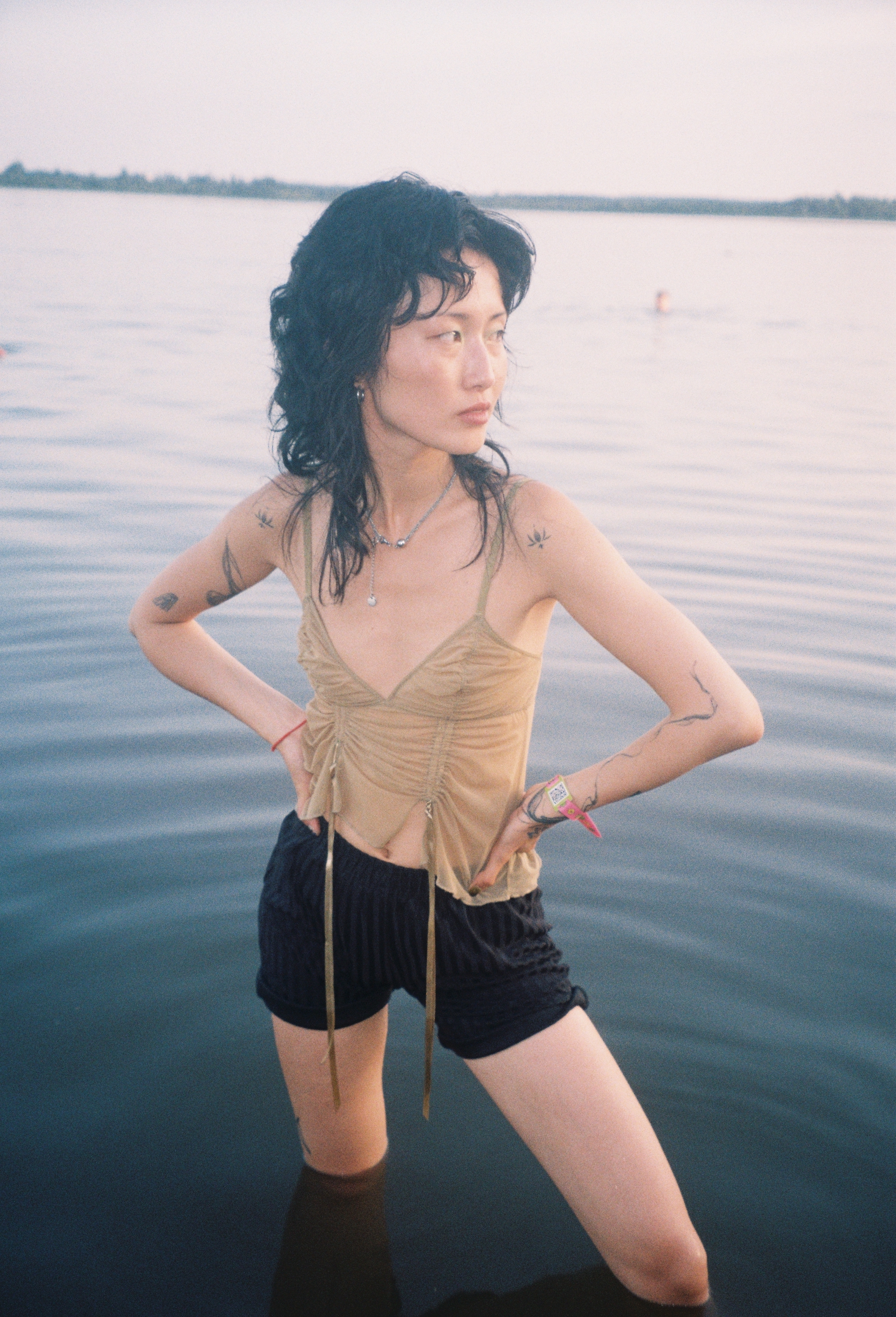
I write this essay in the midst of another sacred Whole ritual: the comedown holiday. This year, I am nursing my physical and spiritual hangovers on a small island in the Aegean, where ancient ruins exist in shared nonchalance with tavernas and beach bars. I am reminded that what feels like the end of time is often actually a mark of transition, the passage from one world system to another. An ending is as much an ending as it is a beginning; it asks us what kind of world will follow, and who will build it.
In this time of climate crisis, defined by grief, loss, and an urgent need for adaptation, who better to turn to than us? The challenges posed to humanity by the climate crisis have been weathered by queer people for generations. From this injustice we have become experts in imagination, resilience, hope, community, survival, and transition — each vital to persist on a burning planet. Perhaps most importantly, we are gifted with an eye for surprising beauty where others cannot see it, and with hands capable of cultivating such beauty from the tatters of our wounded home.
People often call Whole a “queer utopia,” but I don’t see it that way. Utopian projects are typically contained, master-planned, and fleeting. What makes me confident in Whole’s staying power, and in its broader significance, is that it represents the opposite. It is not the product of a singular stroke of genius but the natural result of generations of community-building and artistry across disparate geographies, together producing an increasingly networked and flourishing queer scene. It is messy, unruly, and hard to define, which makes it spacious enough for the great diversity of people within it. I am reminded of the larger ecosystem Whole is sown from during conversations with Venezuelan-born, London-based Tedesco and Colombian-born, Berlin-based CRRDR, whose collectives and club nights have helped carve out a lasting home for Latincore in the competitive European market. Each day we are growing in strength and scale, building life-giving worlds in a time defined by loss. Whole is a monument to that progress.
Whole is not a party at the end of the world but an afterlife of its own, where unconstrained queerness occurs in strange harmony with nature. It is a demonstration of the kinds of worlds we can create, as those who have learned to dance at the bleeding edges of the one we now bid farewell. I am silent on the bus ride back to Berlin, as many are, basking in the joy that comes from building something new.
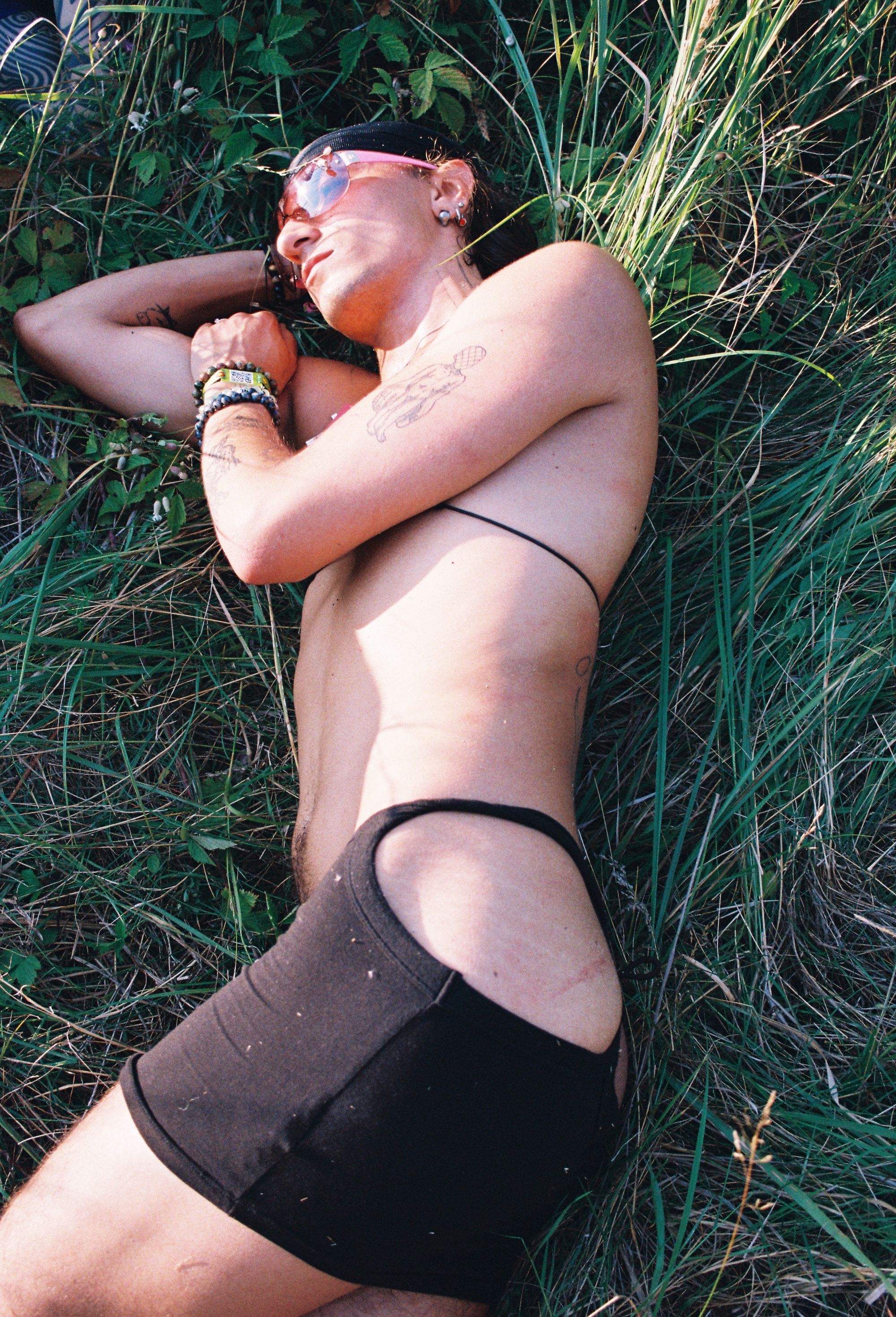
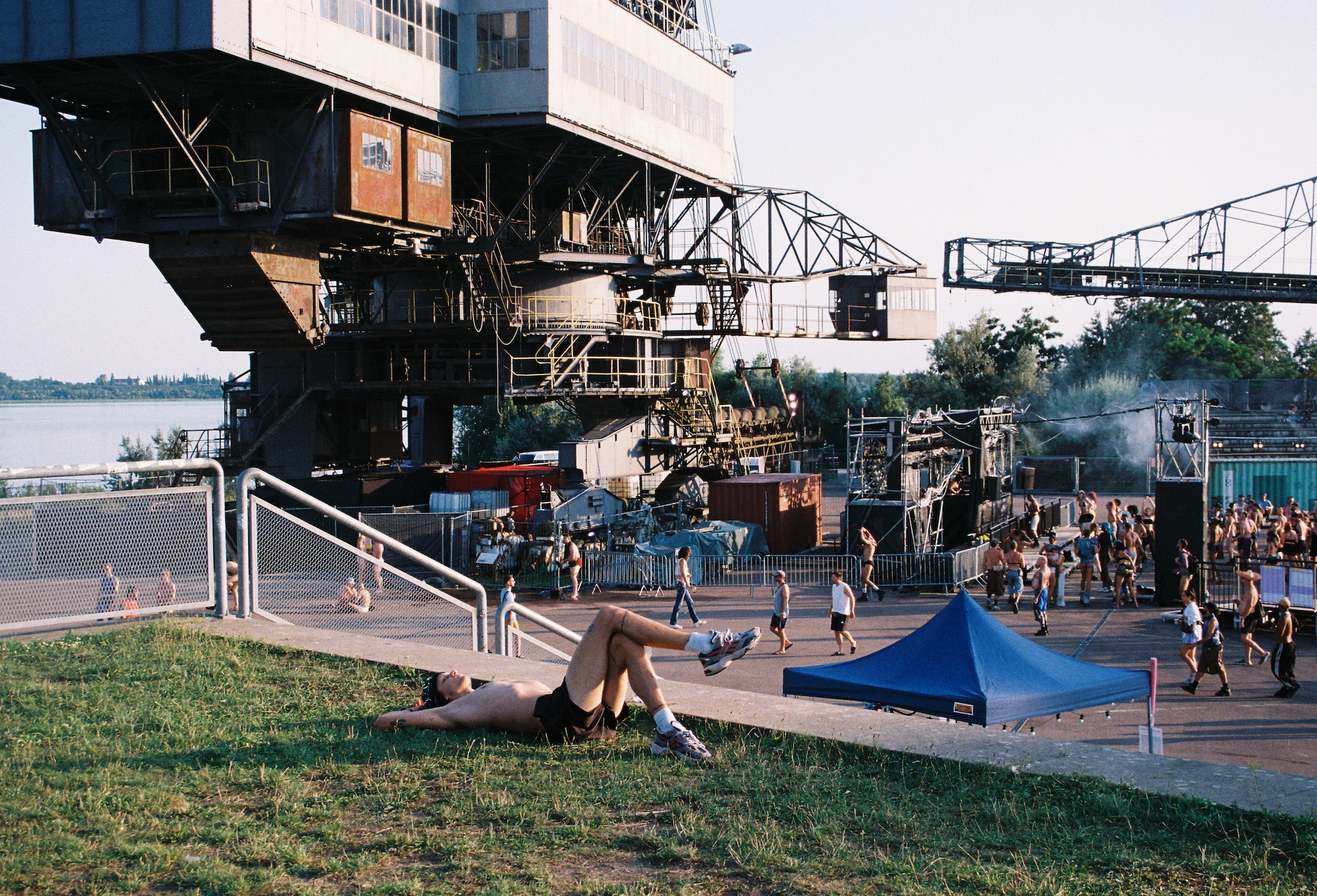
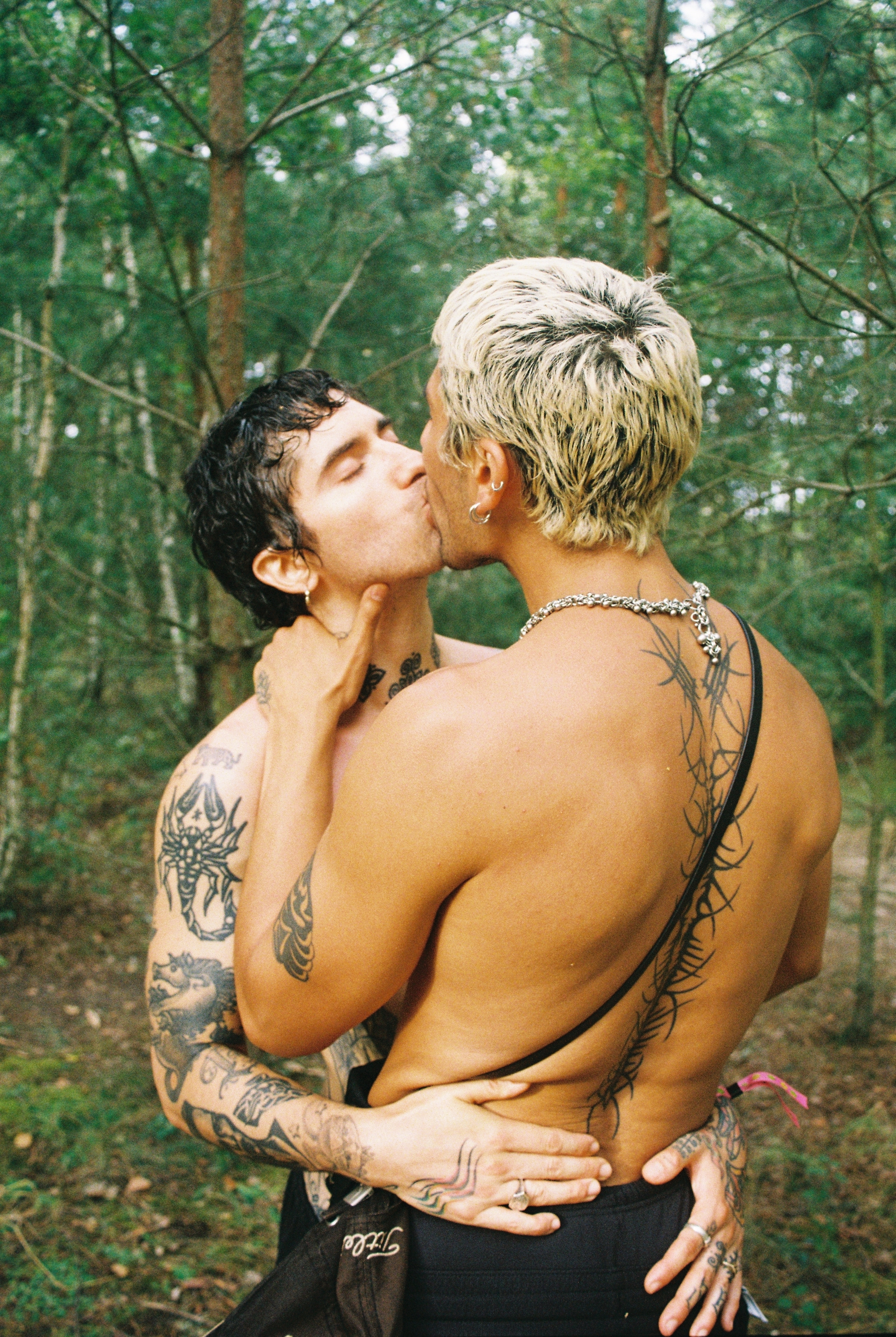
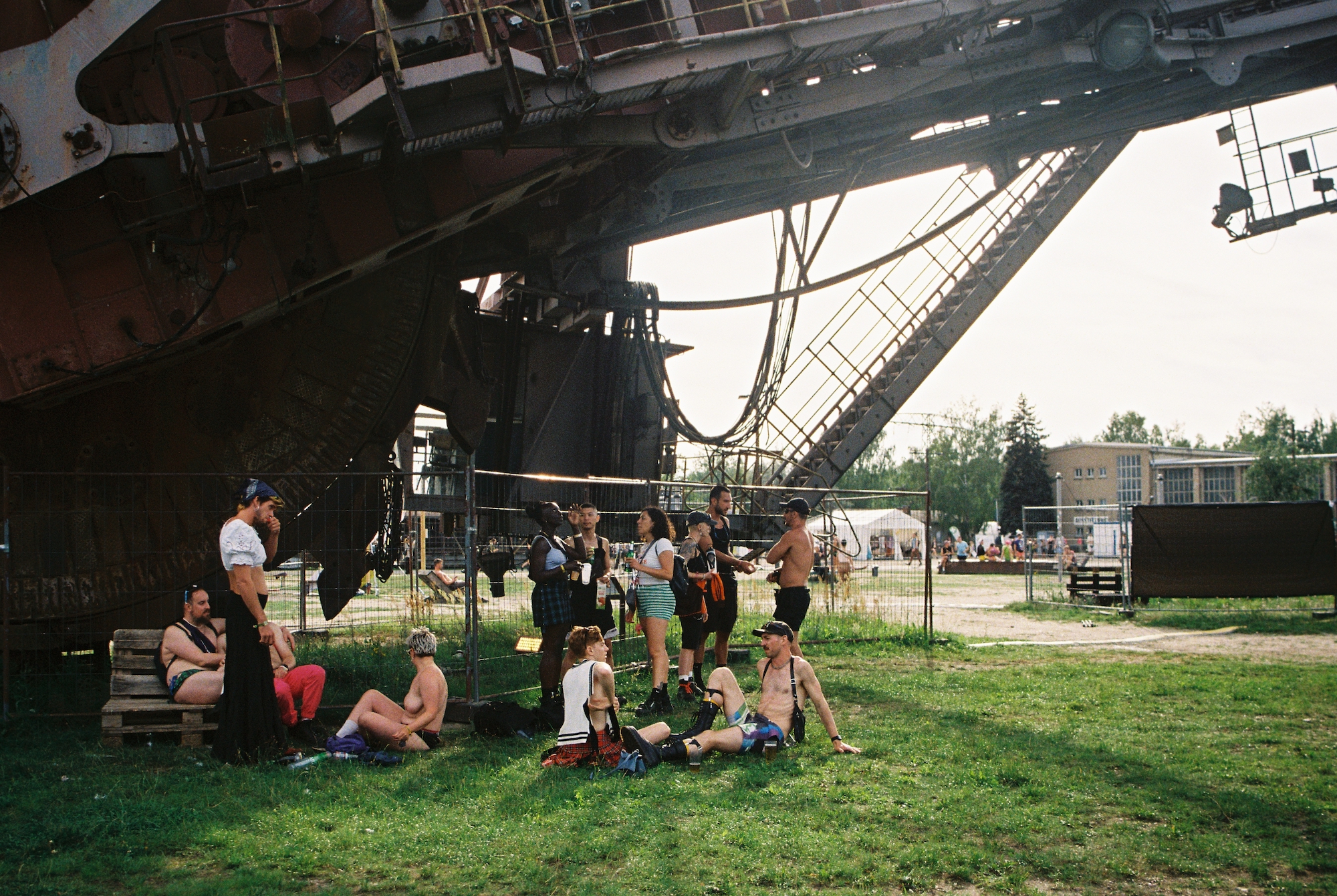

As the co-founder of Dream Baby Press, Starr champions a kind of do-it-yourself, populist poetry that can be written and ingested on-the-go. “There is no barrier to entry,” he says of Dream Baby’s literary events — an earnestness that is sometimes hidden in MOUTHFUL’s casual, almost indifferent whimsy. Office spoke with Starr about the role of humor in MOUTHFUL, the trials and tribulations of indie publishing, and Dream Baby’s experimental future.
Terry Nguyen— You wear so many hats, as a producer (for your day-job at Substack), editor, small-press founder, and now poet. When did you start writing poetry?
Matt Starr— I started writing for fun and for myself starting in 2016, 2017. Around the same time, I was making a remake of Annie Hall that starred seniors with a cast of 80- and 90-year-old actors as an art project. I totally fell in love with older people while making that and became best friends with the star, who was 94 at the time, and we remained close until he passed at 99. That experience really changed my life. And throughout, poetry has always been in the background. Then, the pandemic hit. I got dumped. I moved to the Upper West Side, and there was no opportunity to shoot, since we were working primarily with older people. I started reading a lot more poetry, writing a lot more poetry, and it was the first time where I felt in control creatively, where I didn’t have to ask other people’s opinions as to what I wanted to put down on the page. I was really writing to make myself laugh. And it was the first time in a long time I was having fun making stuff.
How did you come to write and produce this collection?
During the pandemic, I was living near Central Park, and I would run around topless. I felt so free. Nobody was around. One of the themes of MOUTHFUL is body issues. I was reading a ton of poetry and running around, and while on jogs, I would dictate into my phone, and that's kind of how it all started. All of a sudden, I realized I had hundreds of poems.
During this time, Zack [Roif] and I started Dream Baby Press. We started it because we wanted to throw literary events that were fun and exciting and shared our sensibility and ethos. There is no barrier to entry. You didn’t have to like poetry to come to our events. You didn’t have to read poetry. I was reading a lot of punk biographies and I really aligned with the DIY ethos of punk. I wanted to follow in that tradition.
I ended up getting a book deal, but turned it down and then that publisher became an important mentor along the way. I wanted to learn how to make a book, and it was important to me that before Dream Baby publishes anyone else’s book, I should probably learn and make all the mistakes with mine. I got Elinor Hitt, a PhD candidate at Harvard, to be my editor, which was a huge boost of confidence.
A few poems in MOUTHFUL are published in the New Yorker’s humor section under the title, “Some Poems About A Girl I Like.” This is kind of an obvious question, but do you intend for your poems to be funny? (One of my favorite lines is from “Home on the Range.”) What’s the role of humor in your work?
At the launch, [my girlfriend] Mackenzie Thomas gave a speech, where she said, “Matt writes to make himself laugh.” I think I really needed laughter and humor in my life when I was writing these poems after a breakup. The poems and writing I gravitate towards are not self-serious. I think the Trojan horse in my writing is humor. I'm not intentionally trying to be funny, but I think it's like, Why does somebody walk the way they walk or talk the way they talk? Fun is also really important to me. I wanted the process of making and writing these poems to be joyful.
I started reading publicly and performing in 2020 once things opened up, and people would always come up after an open mic and tell me they liked what I did, even if they didn’t usually like or read poetry. I didn't get an MFA. I was not trained as a writer. I studied conceptual art. But I think the throughline with all my work is a sense of humor and sincerity. Even if there is something taboo, I like there to be a sweetness or humor to soften the edges.
“Self Portrait” is a poem about a self-portrait that the speaker’s child self tries to draw. What’s the lore behind the poem and the Bambi drawing?
I was in the special ed for most of my childhood. There was not a lot of schooling going on, but this one teacher, Ms. Levitt, would let us chase our interests and I became really obsessed and fixated on things. Bambi with boobs was one of those images I would draw over and over again. Being in special ed taught me so much empathy and nobody wanted to be there, but I really treasured that time in my life.
There’s another poem with a Marge Simpson drawing at the end. I didn’t draw that but I paid this kid to draw Marge naked. Back then, you had one home computer and porn just wasn’t as accessible. We had printouts we gave out at the opening, and in the drawing, you can see how he drew my hand over her breasts and I made him erase it. I think it's because I wanted to see her full, bare breasts and not have it be obscured by a hand. I just wanted the whole thing to be as horny as possible. After she read the book, I think Jemima [Kirke] said this book is about shame and owning that feeling. It’s about finding the beauty in shame and discovering myself through all of that, and it’s cool how there’s evidence in the drawings to point to.
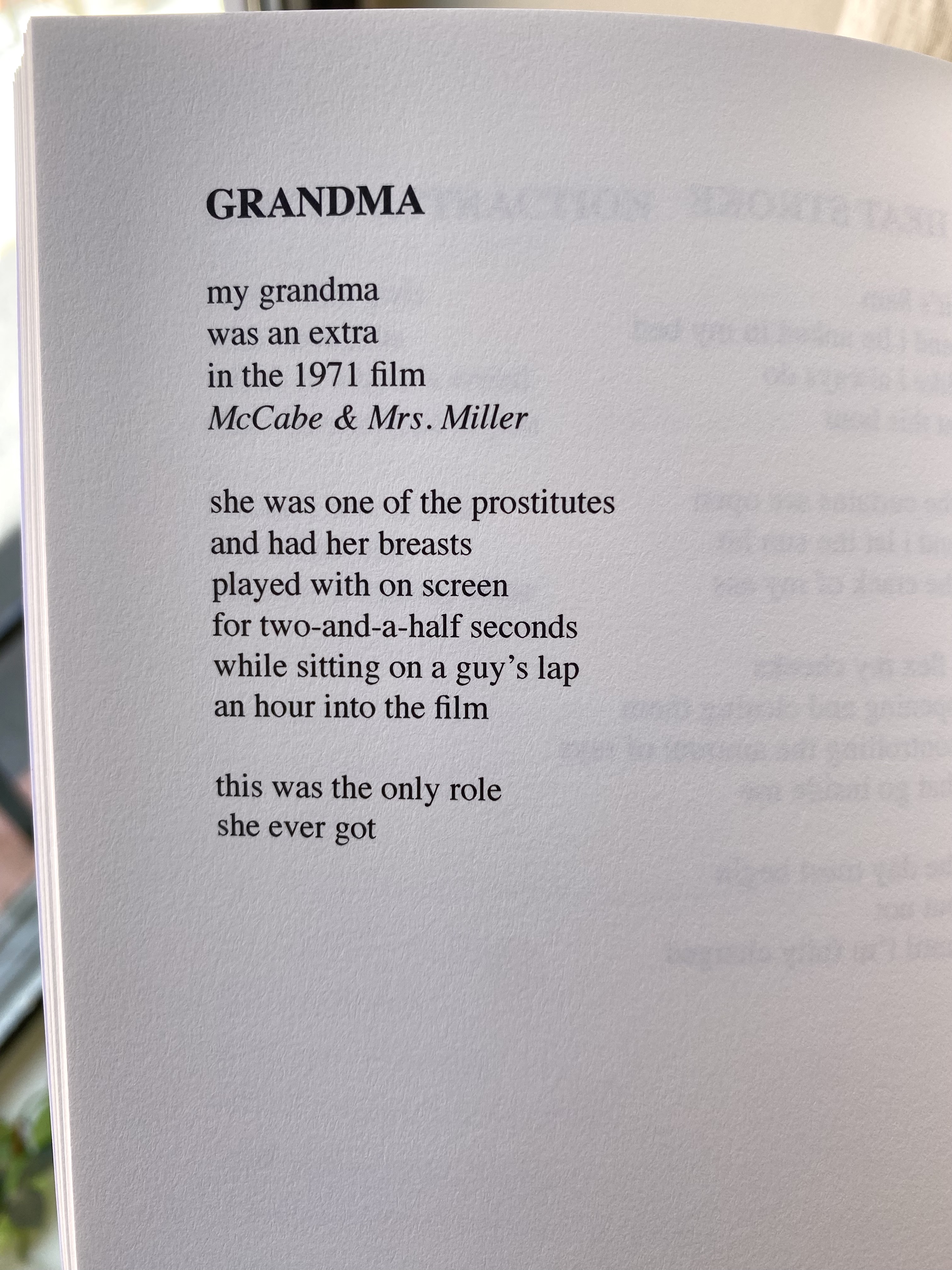
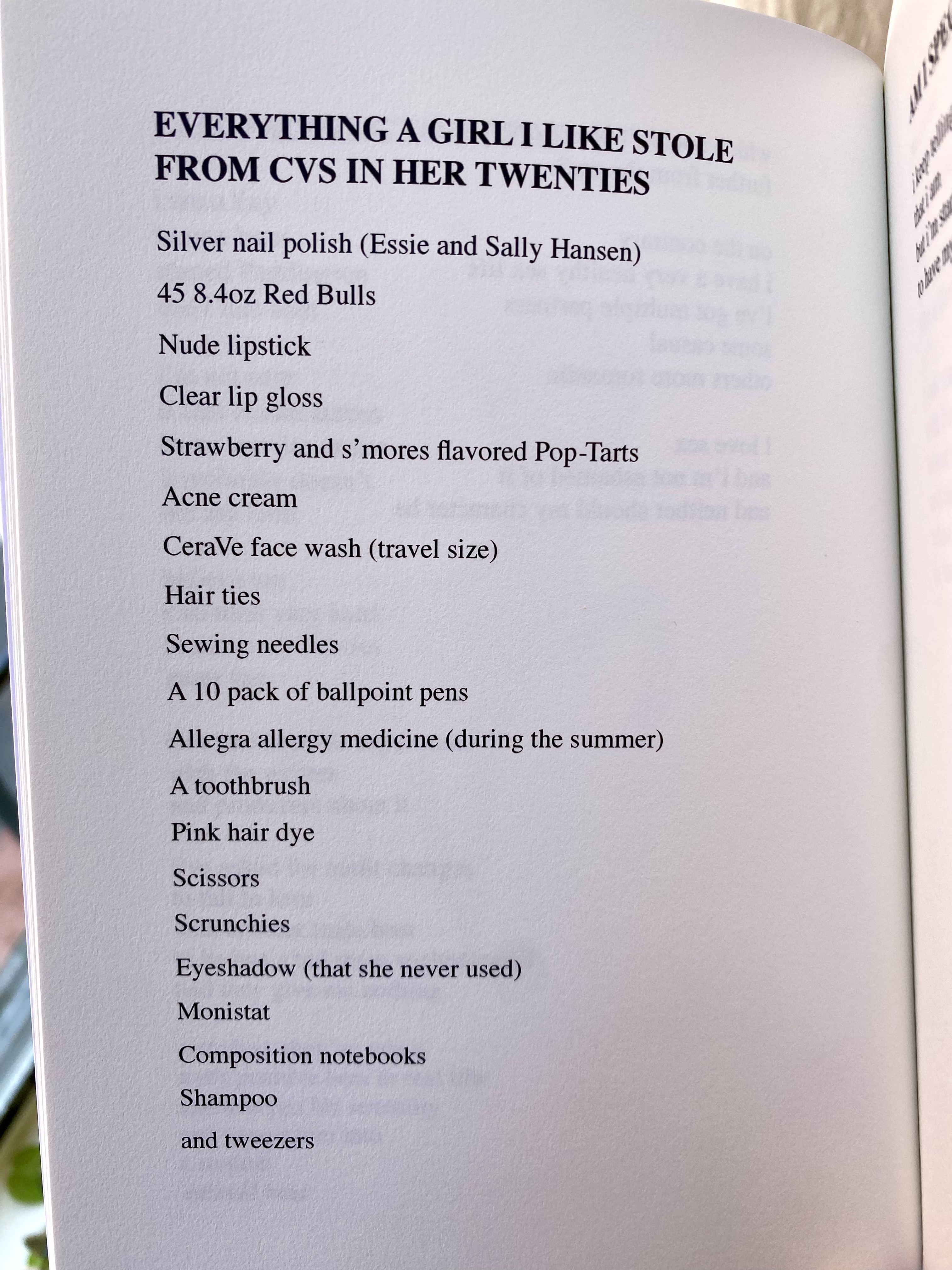
Autofiction is a hot topic right now. Almost every writer I know writes from personal experience, but some are more quiet about it than others. MOUTHFUL sounds diaristic, but I’m not going to assume it’s all autobiographical. How much of it is “real” vs. fiction?
I don’t really know much about autofiction. I’ve heard the term, but I don’t know what it means. For me, I write from two places: diaristic and fantasy. Because of where I was at while writing MOUTHFUL, I really lived in my head, and a lot of my poems became manifestations of the fantasies I was imagining. Some have been worked through and I have successfully lived out some of these fantasies, but it’s a balance. Some are partially diaristic and some are partially fantasies I’m having and working through.
A few poems in MOUTHFUL are written in a list format. Others are very informal and short. Were there any poets or writers that you took stylistic inspiration from?
I was really drawn to Peter Orlofsky, Richard Brautigan, and Renee Ricard. I love how you could open one of their books and see the world in a different way and each had their own sense of humor in their poems. Sometimes there’s spelling mistakes or drawings and they’re serious artists but I don’t know how seriously they’re taking themselves, you know? It feels like they’re having a lot of fun.
Because of my background in film, I think I approach my poems a little bit like cinema. I think visually about what’s happening and how to write a scene. But in terms of inspiration, I got it from Nora Ephron and the romantic comedies I was watching. I was reading a biography about Lou Reed and the Velvet Underground. And as I was falling in love with Mackenzie, her life became like poetry to me.
I love lists. I love how a list reminds me of an old recipe from Julia Child. I love seeing how information is codified and put together in that way. Visually, it’s just so beautiful. It’s actually not fun to read those poems out loud, but looking at them is beautiful. I love working through some ideas almost mathematically in a list. It's almost like a thought problem, but to me, a list is such a poetic way of thinking through and connecting ideas and feelings.
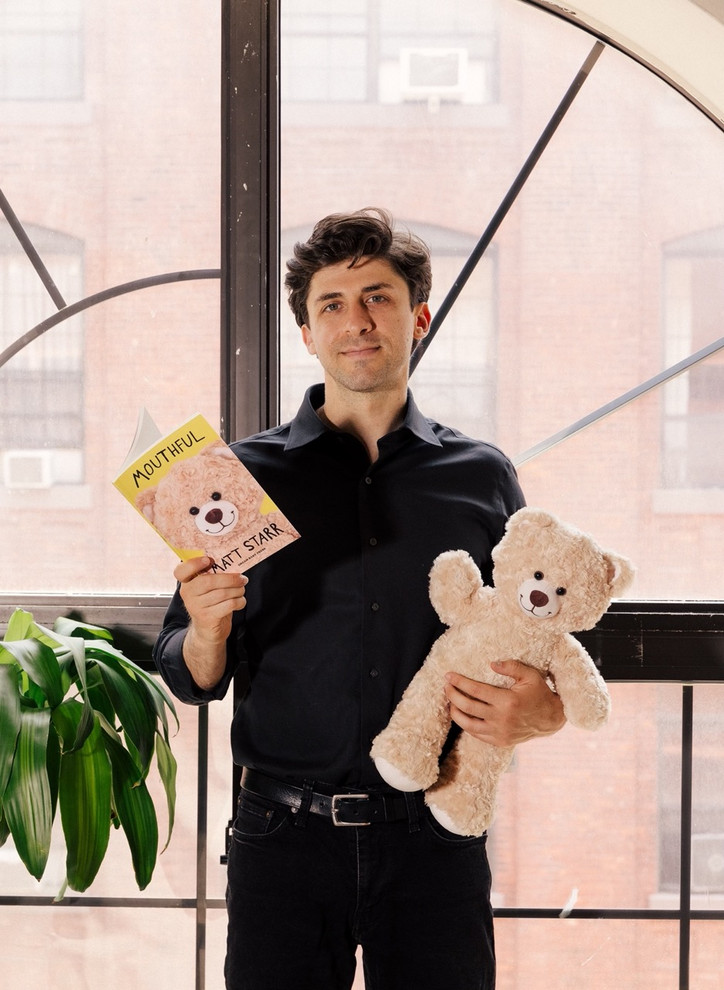
This is your debut book and Dream Baby’s first release. What’ve you learned during the process of publishing your own work?
The actual writing of the book, I think, was the easy part or rather easier part. I have this joke with myself that indie publishing made me hate indie publishing because making this book kicked my ass for a few months. I also wanted a specific look and feel to the book, but I had to learn how to communicate all these things to a printer. Like, I wanted the paper to feel like paper: eggshell white with natural paper stock. The process took so long, and it took many attempts to get there.
Dream Baby isn’t really a business and I’m not a designer. I had some really good friends step in to help me and give the book support. Publishing is really hard. That really surprised me. There’s no Warby Parker version of making a book yet and I have so much respect for anybody who takes the time and effort to publish independently. It’s really fucking hard.
What’s next for you and Dream Baby?
We have a couple of books lined up for Dream Baby. I’m really excited to be going to battle for another writer and have a little distance from the process because I was so pedantic and neurotic about my book. I worked so hard for what appears to be a very simple book. Now that I’ve learned the language, I’m excited to put that to work for the other writers we have on board.
Dream Baby is in a great place. We can do whatever we want, and I’ve gotten to work with so many artists and writers I’ve admired. It’s opened up so many opportunities to do fun, weird things. It has this amorphous form, but now we’re publishing which has been a long time coming. We also throw these crazy literary events and I’m excited to push those even further. I’ve been asking myself for two years what my version is of a book launch party and now I know. I spent four months putting it together, and it was one of the best nights of my life.
We didn’t set out Dream Baby to become what it’s become. Sure, it’s a little more erotic and set in weird spaces, but there was no expectation. I really like sitting in that experimental space where we can say yes to collaborations with people who we find interesting. I have no idea what’s going to happen, but that’s what I find so exciting.